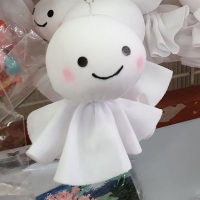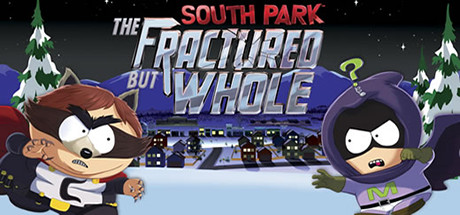South Park: The Fractured But Whole
A turn-based RPG built around the irreverent humor of South Park, this sequel to Stick of Truth lets players adopt a superhero persona in Cartman’s Coon and Friends saga. It was nominated for Best Role-Playing Game at The Game Awards 2017, won Best Collectibles in Game Informer’s RPG awards, and was named Best RPG of E3 2016 by outlets like IGN and MCV. Lauded for deeper combat and faithful adaptation of the show’s tone, it debuted as a top-five best-selling game across major platforms in North America.
Role
Lead Narrative Designer
Level Designer
Additional Writing
Release
October 17, 2017
Responsibilities
Story Development
Systems Design
Mission Design
Progression Design
Level Design
Writing
Storyboarding
Management
Leadership & Contributions
As Lead Narrative Designer on South Park: The Fractured But Whole, I was responsible for translating series creators Matt Stone and Trey Parker’s vision into playable experiences. This included designing custom narrative systems, overseeing mission structure and progression, and guiding both mission and dialogue content to ensure cohesion and fidelity to the IP.
Cross-Discipline Leadership
I led a cross-discipline Narrative team that included writers, a narrative designer, a script coordinator, and our audio designer. Together, we carried the top-down story vision while also supporting other departments bottom-up, providing narrative services such as mission/UI text, combat and systemic dialogue, and player-signaling narrative content. I also partnered closely with the design team to shape mission and combat scenarios, and advised on the theming of character powers, puzzles, and items.
IP Holder Partnership
I participated in writers’ rooms at South Park Studios in Los Angeles to help bring story and gameplay together, and frequently attended stakeholder meetings between studio leadership at Ubisoft and South Park Studios. I supported voice recording sessions by providing gameplay context directly to our talent, and occasionally directed voice recording sessions.
Co-Development
I also worked closely with our co-development studio, Ubisoft Osaka, which provided puzzle and level design support. This included regular collaboration, business travel, and team-building activities to strengthen alignment. My main responsibility was to ensure their work supported our mission structure and that the theming of their content stayed true to the South Park brand.
Dialogue System
I designed the game’s dynamic dialogue system, inspired by Elan Ruskin’s excellent GDC talk on dynamic dialouge driven by fuzzy pattern matching. The system let characters deliver contextually relevant jokes based on party makeup, location, and progression, while also being flexible enough to absorb feedback from South Park Studios and our own team. Instead of brittle, hand-scripted setups, we could tune variables in data to keep dialogue sharp and responsive, even under rapid iteration. I describe the system at a high level in this presentation, though I plan to create a more in-depth overview as a blog post in the future.
You can see the system in action here:
In addition, I wrote large portions of combat dialogue and contributed cutscene dialogue for multiple missions, while providing narrative guidance on character powers and items.
Mission Design
On the missions and progression side, I laid out early drafts of the script into a mission flow, defining tentpole and secondary missions to expose pacing and story gaps. This framework became the backbone for distributing powers, items, and upgrades across the RPG systems.
"U-Stor-It" Main Mission
One of the first missions I developed was U-Stor-It, a tentpole encounter that set the tone for the campaign. I storyboarded its 2D layouts (our equivalent of greyboxing), then used those boards to delegate implementation across design, art, and narrative teams. This process helped us quickly align disciplines, identify gaps, and refine the mission’s flow.
"Character Sheet" Side Missions
Many missions tied directly into the “character sheet” mechanic, where the player gradually earned aspects of their identity. This led to heavily combinatorial missions such as “Choose Your Gender,” which I wrote and directed to ensure dialogue and cinematics stayed coherent while reflecting player choice.
Many of the "character sheet" missions are multi-part, with each part unlocking after making certain progress on main missions. The following video captures the various dialouge branches available throughout the mission series.
(fun fact: As part of this, we implemented pronoun options - he, she, they - making Fractured But Whole the first Ubisoft title to support a gender-neutral pronoun.)

